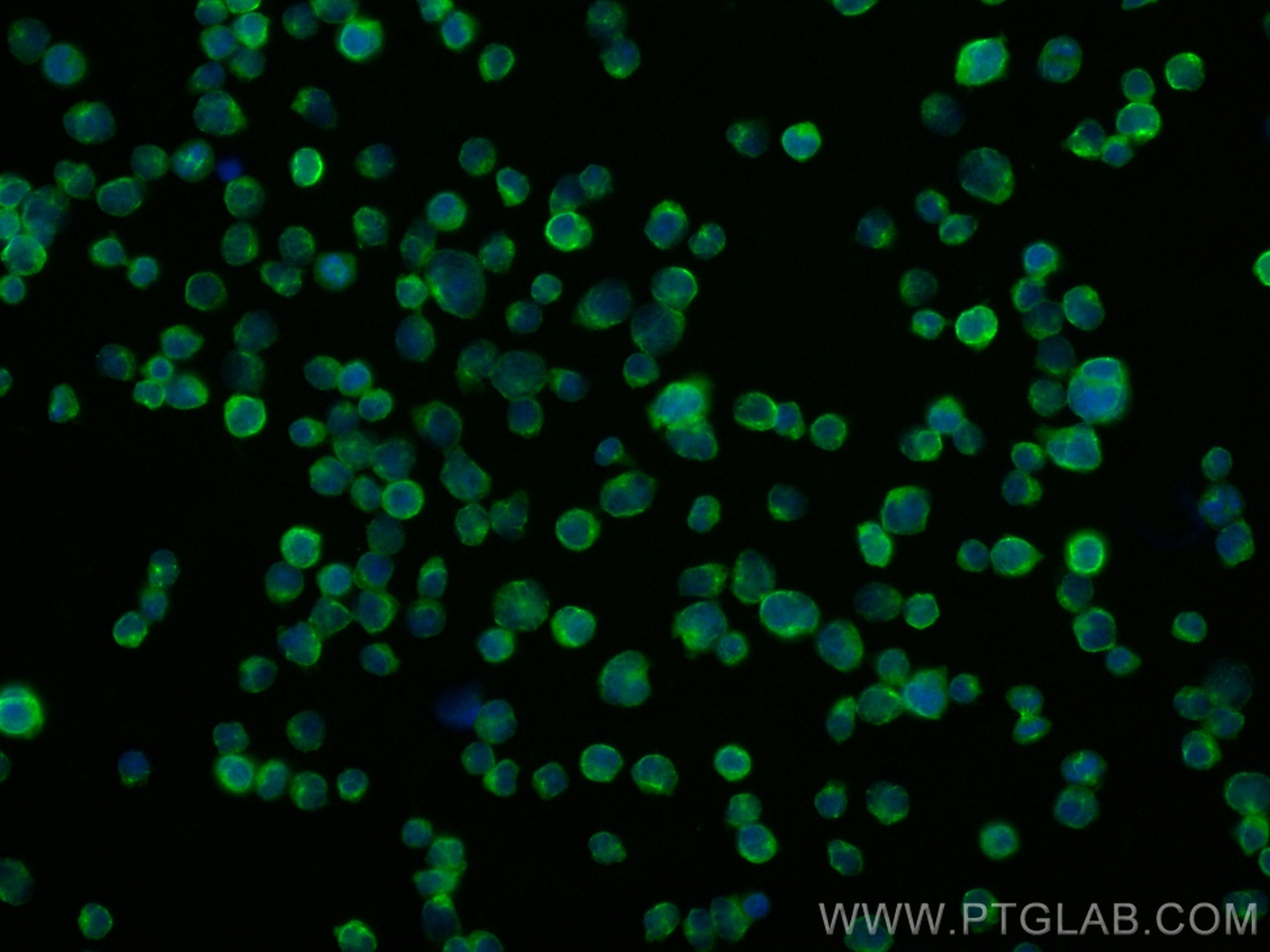CXCR7 Rekombinanter Antikörper
CXCR7 Rekombinant Antikörper für IF/ICC
Wirt / Isotyp
Kaninchen / IgG
Getestete Reaktivität
human
Anwendung
IF/ICC
Konjugation
CoraLite® Plus 488 Fluorescent Dye
CloneNo.
240842C9
Kat-Nr. : CL488-83927
Synonyme
Geprüfte Anwendungen
| Erfolgreiche Detektion in IF/ICC | Jurkat-Zellen |
Empfohlene Verdünnung
| Anwendung | Verdünnung |
|---|---|
| Immunfluoreszenz (IF)/ICC | IF/ICC : 1:400-1:1600 |
| It is recommended that this reagent should be titrated in each testing system to obtain optimal results. | |
| Sample-dependent, check data in validation data gallery | |
Produktinformation
CL488-83927 bindet in IF/ICC CXCR7 und zeigt Reaktivität mit human
| Getestete Reaktivität | human |
| Wirt / Isotyp | Kaninchen / IgG |
| Klonalität | Rekombinant |
| Typ | Antikörper |
| Immunogen | CXCR7 fusion protein Ag14247 |
| Vollständiger Name | chemokine (C-X-C motif) receptor 7 |
| Berechnetes Molekulargewicht | 362 aa, 41 kDa |
| Beobachtetes Molekulargewicht | 50 kDa |
| GenBank-Zugangsnummer | BC036661 |
| Gene symbol | CXCR7 |
| Gene ID (NCBI) | 57007 |
| Konjugation | CoraLite® Plus 488 Fluorescent Dye |
| Excitation/Emission maxima wavelengths | 493 nm / 522 nm |
| Form | Liquid |
| Reinigungsmethode | Protein-A-Reinigung |
| Lagerungspuffer | PBS with 50% glycerol, 0.05% Proclin300, 0.5% BSA |
| Lagerungsbedingungen | Bei -20°C lagern. Vor Licht schützen. Nach dem Versand ein Jahr stabil. Aliquotieren ist bei -20oC Lagerung nicht notwendig. 20ul Größen enthalten 0,1% BSA. |
Hintergrundinformationen
CXCR7 (C-X-C chemokine receptor type 7), also known as RDC1, is a G-protein coupled receptor family member. CXCR7 can bind the chemokines CXCL11 and CXCL12 with high affinity, and it also acts as a coreceptor with CXCR4 for a restricted number of HIV isolates. The expression of CXCR7 has been associated with cardiac development, tumor growth, and progression.
Protokolle
| PRODUKTSPEZIFISCHE PROTOKOLLE | |
|---|---|
| IF protocol for CL Plus 488 CXCR7 antibody CL488-83927 | Protokoll herunterladen |
| STANDARD-PROTOKOLLE | |
|---|---|
| Klicken Sie hier, um unsere Standardprotokolle anzuzeigen |


